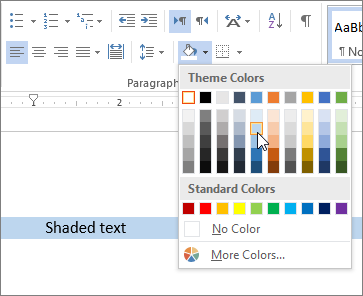

Hence, in its present HP-41C application, SHADE can be used in preliminary design and comparative analyses of shading devices on an hourly, daily, or seasonal basis, provided that: (1) the fins and overhangs be square or rectangular, and lie in planes perpendicular to the plane of the opening and (2) the opening itself be vertical and rectangular with arbitrary building azimuths. In particular, for a given solar hour, SHADE is used to compute the following quantities for overhang and side fin combinations which shade various openings: the percentage of the total area of the opening which is shaded the shaded area itself the cosine of the angle of incidence between sun and glazing surface the direct insolation at this surface, with and without shading and the more » direct solar power at this surface, with and without shading. Preliminary applications of SHADE using a Hewlett Packard HP-41C programmable calculation are outlined. « lessĪn exact, recursive method called SHADE is described which attempts to simplify shading calculations as performed by a programmable calculator or microcomputer. Since exterior shading can also significantly reduce peak demand, these models enable stakeholders to more accurately assess HVAC and lighting impacts in support of grid management and resiliency goals. Results of the validation of daylighting performance are applicable to solar heat gain performance. Methods used to achieve accurate results are discussed. Results demonstrated model accuracy: simulated workplane illuminance was within 11–13%, surface luminance was within 16–18%, and the daylight glare probability was within 6–9% of measured results. Simulated data were compared to measured data in order to validate the models. A field study was conducted in a full-scale outdoor testbed to measure the daylight performance of an operable drop-arm awning. A facade or “F” matrix, which maps the transfer of flux from the NCS to the surface of the window, is introduced and its use is explained. Such capabilities would be useful not only for design but also for development of prescriptive energy-efficiency standards, rating and labeling systems for commercial products, development of design guidelines, and development of more optimal NCS technologies. This study describes and validates a matrix algebraic method that enables parametric energy analysis of NCS.

Determining the best design and/or material for static or operable NCS that minimize cooling, heating, and lighting energy use and peak demand requires an iterative process. For more » daylighting analysis, optically-complex NCS can be modeled using matrix algebraic methods, although time-efficient parametric analysis has not yet been implemented. Most simulation tools rely on geometric calculations and radiosity methods to model the solar heat gain impacts of NCS and cannot model optically-complex materials or geometries. Designers however often specify non-opaque materials (e.g., louvers, fritted glass, expanded metal mesh) for these systems in order to admit daylight, reduce lighting energy use, and improve indoor environmental quality.

Word shading tool windows#
It has long been established that shading windows with overhangs, fins, and other types of non-coplanar systems (NCS) is one of the most effective ways of controlling solar heat gains in buildings because they intercept solar radiation prior to entry into the building. A brief historical review of the sunpath diagrams and additional information regarding the computerization of the diagrams is provided in McWatters and Haberl (1994a,b). This technical note describes the basic equations that can be used to develop a computerized construction of the shading mask protractor and sun-path diagram, and demonstrates their use with an example shading device at a northern latitude. The outline of the shading device is then transcribed upon the more » shading mask, aligned at the proper orientation for the facade in which the window is being analyzed, and placed on top of the sun-path diagram to determine if a point at the base and center of a window is exposed to direct sunlight. A designer using the AIA`s Graphics Standards book, or other versions of the sun-path diagram (LOF, 1974 Mazria, 1979) must select the nearest latitude, make photocopies of the appropriate sun-path diagram and shading mask protractor, and then overlay the shading mask protractor upon the diagram in the proper orientation. The well-known versions of sun-path diagrams and shading mask protractors that appear in the AIA`s Architectural Graphic Standards (Ramsey and Sleeper, 1970) are based on the equi-distant projections and use the shading mask protractor developed by Olgyay and Olgyay (1957).


 0 kommentar(er)
0 kommentar(er)
